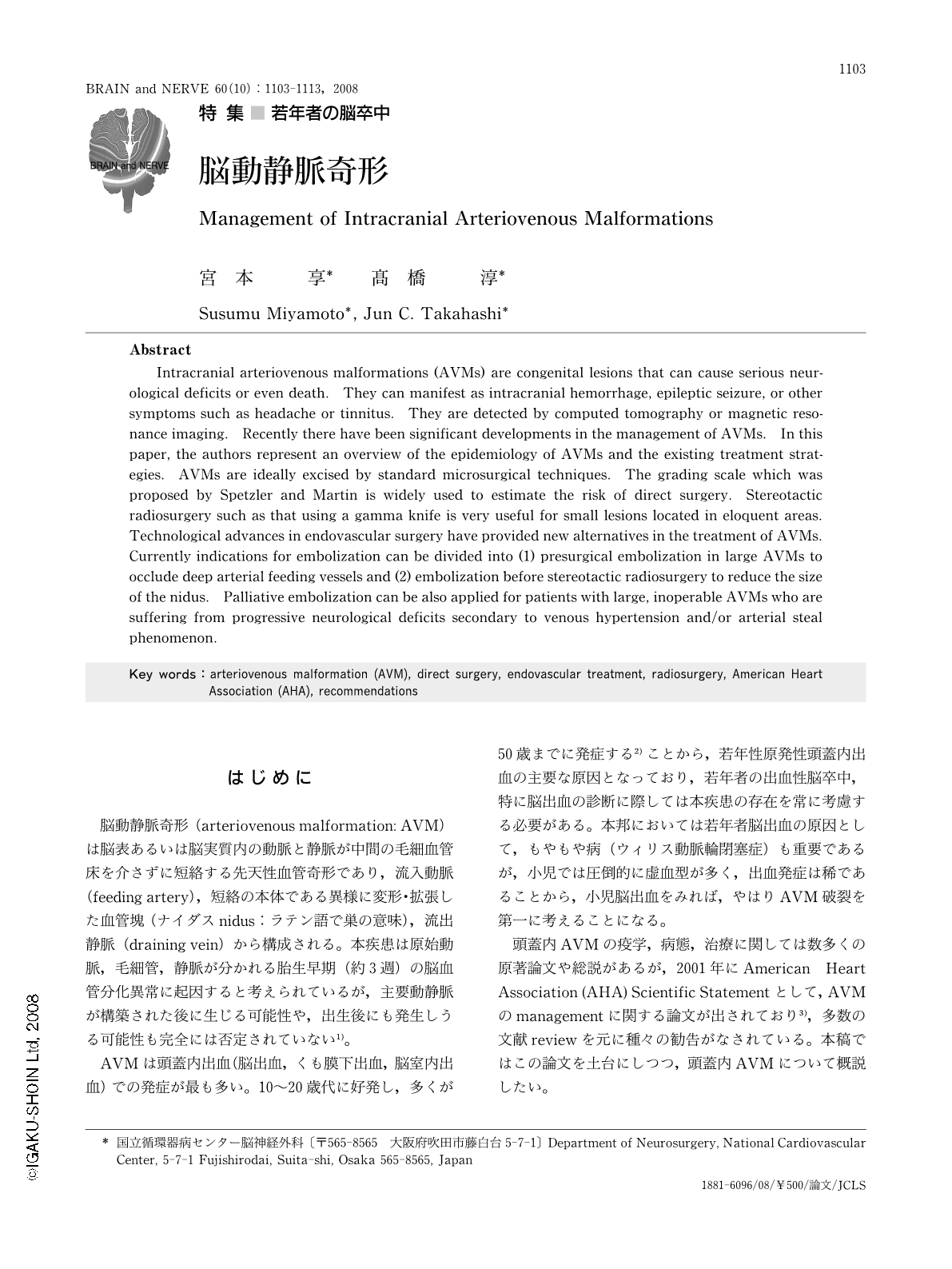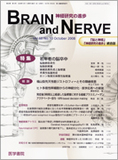Japanese
English
- 有料閲覧
- Abstract 文献概要
- 1ページ目 Look Inside
- 参考文献 Reference
はじめに
脳動静脈奇形(arteriovenous malformation: AVM)は脳表あるいは脳実質内の動脈と静脈が中間の毛細血管床を介さずに短絡する先天性血管奇形であり,流入動脈(feeding artery),短絡の本体である異様に変形・拡張した血管塊(ナイダスnidus:ラテン語で巣の意味),流出静脈(draining vein)から構成される。本疾患は原始動脈,毛細管,静脈が分かれる胎生早期(約3週)の脳血管分化異常に起因すると考えられているが,主要動静脈が構築された後に生じる可能性や,出生後にも発生しうる可能性も完全には否定されていない1)。
AVMは頭蓋内出血(脳出血,くも膜下出血,脳室内出血)での発症が最も多い。10~20歳代に好発し,多くが50歳までに発症する2)ことから,若年性原発性頭蓋内出血の主要な原因となっており,若年者の出血性脳卒中,特に脳出血の診断に際しては本疾患の存在を常に考慮する必要がある。本邦においては若年者脳出血の原因として,もやもや病(ウィリス動脈輪閉塞症)も重要であるが,小児では圧倒的に虚血型が多く,出血発症は稀であることから,小児脳出血をみれば,やはりAVM破裂を第一に考えることになる。
頭蓋内AVMの疫学,病態,治療に関しては数多くの原著論文や総説があるが,2001年にAmerican Heart Association (AHA) Scientific Statementとして,AVMのmanagementに関する論文が出されており3),多数の文献reviewを元に種々の勧告がなされている。本稿ではこの論文を土台にしつつ,頭蓋内AVMについて概説したい。
Abstract
Intracranial arteriovenous malformations (AVMs) are congenital lesions that can cause serious neurological deficits or even death. They can manifest as intracranial hemorrhage,epileptic seizure,or other symptoms such as headache or tinnitus. They are detected by computed tomography or magnetic resonance imaging. Recently there have been significant developments in the management of AVMs. In this paper,the authors represent an overview of the epidemiology of AVMs and the existing treatment strategies. AVMs are ideally excised by standard microsurgical techniques. The grading scale which was proposed by Spetzler and Martin is widely used to estimate the risk of direct surgery. Stereotactic radiosurgery such as that using a gamma knife is very useful for small lesions located in eloquent areas. Technological advances in endovascular surgery have provided new alternatives in the treatment of AVMs. Currently indications for embolization can be divided into (1) presurgical embolization in large AVMs to occlude deep arterial feeding vessels and (2) embolization before stereotactic radiosurgery to reduce the size of the nidus. Palliative embolization can be also applied for patients with large,inoperable AVMs who are suffering from progressive neurological deficits secondary to venous hypertension and/or arterial steal phenomenon.

Copyright © 2008, Igaku-Shoin Ltd. All rights reserved.


